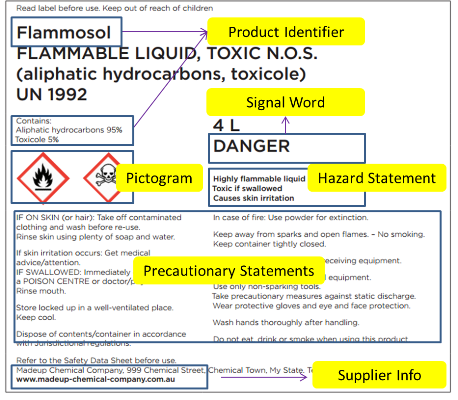Australia will implement GHS for workplace hazardous chemicals (both substances and mixtures) from 1 Jan 2017. Right now, GHS SDSs and labels are not compulsory in Australia. The model Work Health and Safety Regulations (WHS Regulations) issued in 2011 impose a duty on manufacturers and importers of chemicals supplied to a workplace to correctly classify the chemical according to GHS Rev. 3, label hazardous chemicals in workplace and provide safety data sheets.


Read more at http://www.chemsafetypro.com/Topics/Australia/Australia_GHS.html
Classification and Building Blocks
There is no separate guidance on chemical classification in Australia. The new WHS Regulations directly reference UN GHS Rev. 3. The following building blocks are not adopted.
- acute toxicity - Category 5;
- serious eye damage/eye irritation - Category 2B;
- aspiration hazard - Category 2;
- flammable gas - Category 2;
- acute hazard to the aquatic environment - Category 1, 2 or 3;
- chronic hazard to the aquatic environment - Categories 1, 2, 3 or 4, or
- hazardous to the ozone layer.
Safe Work Australia has published a list of chemicals classified in accordance with GHS. The classifications are non-mandatory under the WHS Regulations, and should be used as guidance only.
Labelling of Workplace Hazardous Chemicals
Australia has adopted standard GHS label elements for workplace hazardous chemicals. The picture below is an example of Australian GHS label given by Safe Work Australia.

Like many other countries, Australia also has its own unique labelling requirements. Such requirements are set by the Code of Practice for Labelling of Workplace Hazardous Chemicals.
- Must include Australian contact details of the manufacturer or importer;
- Max. number of p-statements: 6~10;
- Additional info required if available: the expiry date of the chemical (if applicable), overseas supplier's contact info, emergency contact number, website address and reference to SDSs;
- Size requirement: see picture below;
- Small containers (size not defined):
- Minimum info required: product identifier, Australian contact info, and hazard pictogram or hazard statements;
- Must include as much labelling information as possible, particularly significant hazards;
- "Refer to the Safety Data Sheet" is recommended;

Safety Data Sheets (SDS)
The format and content of Safety Data Sheets (SDS) are set by the Code of Practice for the Preparation of Safety Data Sheets for Hazardous Chemicals. A SDS prepared in accordance with GHS regulations in other countries (for example, the EU CLP Regulation must be checked for compliance with the WHS Regulations and amended if necessary to bring it into compliance.
- Standard 16-section SDSs;
- Emergency phone number: Must include Australian emergency contact information which is available outside of working hours;
- Pictogram size: >1cm x1 cm and <2cm x2 cm;
- Section 15: Indication of whether a hazardous chemical is subject to the control of International conventions and domestic regulations such as NICNAS.
Information Disclosure on Labels and in SDSs
- General Principle: The chemical identity of a hazardous ingredient contributing to the classification of a chemical or a substance with occupational exposure limits must be disclosed;
- Chemical Identity Disclosure: Use of generic name for a hazardous ingredient only accepted in certain cases (moderate hazard category and no occupational exposure limit established);
- Concentration Disclosure: Percentages should be listed in descending order by mass or volume; If the exact concentration of an ingredient is confidential, the concentration of the ingredient can be disclosed using the following range or narrower range: <10%, 10-30%, 30%-60%, >60%;
Read more at http://www.chemsafetypro.com/Topics/Australia/Australia_GHS.html
Related GHS Info & Resources
Thanks for sharing this useful information. We all use chemicals in our everyday lives for a variety of things. Handling chemicals, especially industrial chemicals, which is very harmful for everybody. It is important to understand the risks when we use chemicals. We need to be aware of the effect. Follow guidelines from icsds.com.
ReplyDelete